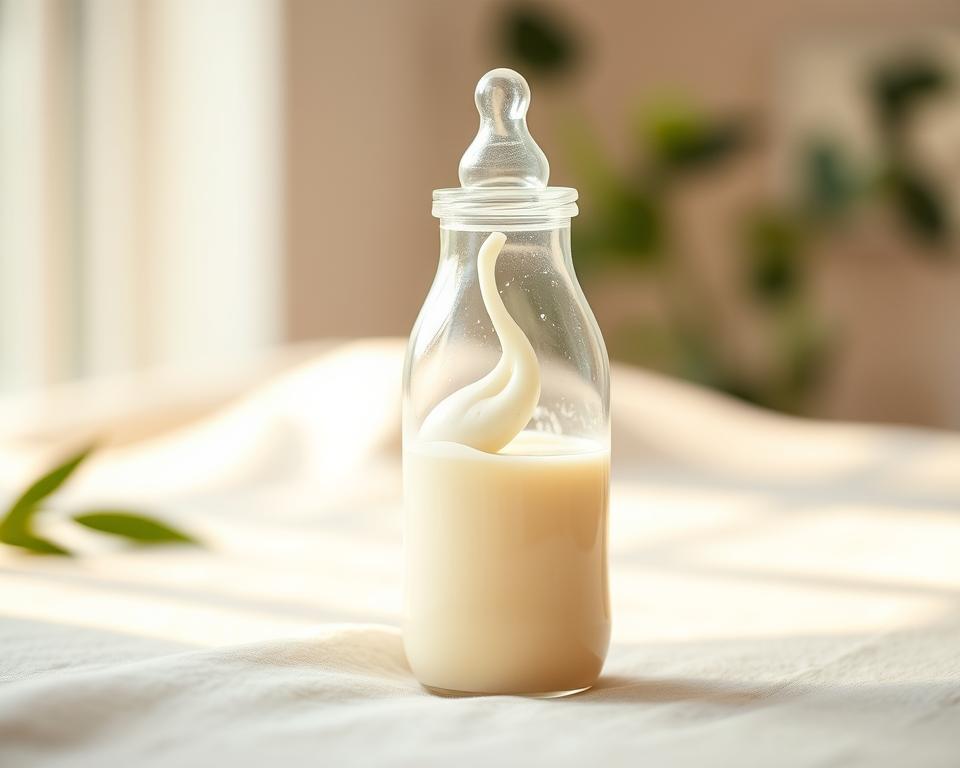Highest-Rated NYC SEO Services for Expansion
Surprisingly enough, 93% of online experiences originate with a search engine? This statistic underscores the vital function of SEO in the current online landscape. Marketing 1on1, a leading New York SEO company, specializes in elevating businesses through personalized SEO services. In the rivalrous New York City market, working with a highest-rated SEO company is not just beneficial—it’s essential for online success. A professional SEO NYC can formulate approaches that enhance your digital presence and increase user engagement and conversions.
Proven SEO tactics empower organizations to leverage search engines to engage their audience. By exploring SEO fundamentals, you’ll understand its significance for your company and how it can fuel growth.
Main Takeaways
- 93% of online experiences start with search engines.
- SEO is crucial for business visibility in competitive markets.
- Custom SEO strategies lead to better customer engagement.
- Partnering with a premier SEO firm NYC boosts company expansion.
- City-specific SEO solutions can dramatically boost your digital footprint.
Grasping SEO & Why It Matters
Search engine optimization, or SEO, is key to enhancing your company’s digital footprint. In New York’s rapidly moving environment, a robust SEO plan can set your brand apart. Over 53.3% of website visitors arrive through unpaid search, emphasizing the necessity for powerful SEO for enduring growth.
SEO: What It Means
SEO involves techniques to enhance your site position on SERPs. It comprises tuning on-page content, website architecture, and employing various tactics. The main aim is to grow unpaid visits, boosting conversion rates and customer loyalty.
Why SEO Is Crucial
Grasping the value of SEO can push your business forward. People often use search engines to find products. By employing SEO solutions in NYC, your company becomes more noticeable when users search for relevant terms. This results in increased visits, yielding qualified leads and revenue.

Keyword Importance in SEO
Keywords are central to any SEO strategy, linking user searches with your content. Thorough keyword research is vital. It informs content strategies and reveals popular search terms. Working with a premier SEO firm in New York can uncover these insights, customizing your plan for greater exposure.
Efficient SEO combines technical skills with strategic planning. By emphasizing detailed keyword strategies and understanding user intent, businesses can use SEO as a strong growth driver.
Why Hire an NYC SEO Agency?
Opting for a New York SEO company offers various benefits for enhancing your digital footprint. These firms have extensive insights into the NYC landscape, crafting plans that meet the distinct needs of companies here. By working with local SEO experts in New York City, you tap into their vast expertise of customer habits and industry shifts.
NYC Market Expertise
New York SEO agencies have a deep grasp of the NYC marketplace. Their know-how allows them to craft approaches that appeal to NYC audiences. In a diverse market like New York City, having specialists who understand the community’s specific needs can significantly improve a company’s visibility and relevance.
Premium Expertise
Opting for cost-effective SEO services in NYC entails accessing some of the top professionals. Many New York SEO agencies employ specialists in various SEO disciplines. This team is skilled in utilizing the most advanced methods to improve your site performance, leading to improved visibility.
Networking Opportunities
Working with a New York SEO company provides beneficial connections. These firms often have connections with NYC enterprises, influencers, and media outlets. Networking can lead to partnerships that enhance your marketing efforts, enabling you to reach new audiences and expand your company.
Key Services Offered by New York SEO Companies
New York SEO companies provide a variety of vital solutions aimed at enhancing online presence and driving more traffic to online properties. Partnering with a leading SEO agency means embracing a variety of strategies for comprehensive optimization. These tactics include on-page SEO, off-page SEO approaches, and technical SEO practices.
Page-Level SEO Strategies
This offering focuses on optimizing single pages to boost their search rankings. It involves optimizing copy, title tags, meta descriptions, and internal linking structures. A experienced SEO firm in New York will carefully tweak each component to draw in both users and search engines.
External SEO & Backlinking
Off-page SEO is vital for enhancing your site’s authority and reputation. Securing quality backlinks from reputable domains improves your search visibility. New York SEO agencies leverage their broad networks to secure links that strengthen your site’s credibility and search rankings.
Site Performance SEO
This aspect focuses on optimizing a site infrastructure for optimal performance and search engine accessibility. It may include accelerating page speeds, improving mobile responsiveness, and ensuring proper indexing. A trusted SEO company in NYC will provide the expertise for exceptional results.
| Category |
What It Does |
Benefit |
| On-Page SEO |
Page element optimization |
Improved rankings |
| Off-Page SEO |
Link building & reputation management |
Enhanced credibility |
| Technical SEO |
Infrastructure & speed enhancements |
Improved UX |
Selecting the Best SEO Agency
Opting for the ideal SEO agency is vital for your company’s online success. Consider key factors to inform your choice. Review the firm’s track record and reputation, inquire that address your business needs, and examine case studies that demonstrate their SEO successes in New York.
Evaluating Track Record
Experience is crucial when choosing the best SEO firm in New York. Look for firms with a history of successful campaigns. A reputable firm will transparently discuss its past work and results. Their digital footprint, including client reviews, offers useful insights into their efficacy and trustworthiness.
Asking the Right Questions
Prepare a list of questions for your meeting with SEO agencies. Ask about their approaches, software, and success metrics. This will help you gauge if they can meet your goals. Don’t forget to discuss communication to guarantee seamless collaboration.
Role of Testimonials
Project examples are a powerful sign of a company’s capabilities. Analyze their previous projects to understand their problem-solving and innovation. Look for specific results and on-time delivery in their case narratives. Together with testimonials will assist you validate your SEO choice in New York.
How SEO Campaigns Work in NYC
Launching an SEO campaign requires a well-defined, step-by-step process. The best SEO firms in New York provide a detailed, open plan. This includes an introductory meeting, the creation of bespoke plans, and ongoing monitoring. Knowing this workflow can significantly improve the outcomes of SEO campaigns in New York.
Initial Consultation and Analysis
The initial phase is a in-depth discussion. Experts evaluate the your digital standing and goals. They also analyze competitors and market trends. This foundation is essential for formulating a strategy that matches market standards.
Executing the Plan
After the assessment, the next step is to implement the plans. Based on findings from the initial meeting, customized SEO approaches are rolled out. These strategies involve optimizing website content, enhancing architecture, and applying targeted keywords. This guarantees companies are more visible in a rivalrous environment.
Performance Monitoring
Continuous tracking is vital to assess the effectiveness of SEO efforts. Periodic updates offer insights into performance metrics. This allows businesses to see the direct effects of their strategies. It also highlights improvement opportunities, keeping them on track.
Local SEO Strategies for New York Businesses
New York businesses encounter unique challenges and opportunities in local SEO. Focused strategies can significantly boost their presence in a competitive landscape. Working with local SEO specialists in New York City offers valuable insights into refining these approaches successfully.
GMB Significance
Google My Business (GMB) is a key component of local SEO. Setting up and optimizing your GMB listing ensures you appear in map listings. This can lead to more in-store visits and digital leads. Photos, operational hours, and customer reviews are important in how customers perceive your business.
Keeping your information accurate and up-to-date is essential for optimal exposure.
City-Specific Keyword Usage
Local keywords are critical for drawing in targeted visitors to New York businesses. Implementing region-focused keywords enhances SERP positions and boosts the chance of reaching nearby customers. Working with local SEO specialists in New York City can assist determine the most effective geotargeted terms for your company.
This customized strategy boosts your search visibility and engages your target audience more precisely.
Content-SEO Harmony
Integrating content strategy with SEO is key to enhancing digital visibility. High-impact content captures interest and meets SEO goals. It generates visitors and conversions, improving your brand’s visibility.
Creating Engaging Content
Your content plan should focus on content that resonates. Top-tier articles, blogs, videos, and infographics engage users with valuable insights. Incorporating relevant keywords from SEO services in New York enhances your visibility.
Focus on narrative and UX to enhance engagement. This approach elevates interaction.
How Content Supports SEO Goals
Content marketing supports SEO goals by purposeful keyword use. Search terms help your content to reach a wider audience and strengthen site authority. A leading SEO company knows the value of matching content with ranking criteria.
Optimized materials for target keywords drive natural visits. This increases your chances of top SERP positions, enhancing your online presence.
SEO & Social Integration
In the current online landscape, social media is a major contributor in enhancing search engine optimization in New York. Businesses leverage various channels to increase their exposure, connect with their followers, and establish a strong online presence. This integration of social media and SEO is essential for generating website traffic and elevating brand awareness.
Enhancing Brand Awareness
Effective social media use can significantly boost brand visibility among possible clients. By sharing useful content and engaging with followers, businesses can create a community around their brand. Eye-catching graphics, targeted campaigns, and engaging updates assist amplify reach. A top-notch SEO firm can design strategies to maximize social media ROI. This makes sure your company not only appears in search results but also connects with the customers.
Directing Followers to Your Site
Connecting social media profiles to your website can substantially increase visits and improve search rankings. By regularly posting content that links back to the site, such as posts or offers, followers are encouraged to visit the website. Social signals—like favorites, reposts, and comments—influence search engine results. Companies seeking to optimize their digital footprint should combine social media tactics with SEO strategies in New York.
Frequent SEO Pitfalls
Numerous companies encounter common traps that can undermine their SEO efforts. It’s crucial to be aware of these mistakes to maximize your SEO strategy. Two major mistakes include overlooking mobile SEO and neglecting user experience. Both are essential for success with affordable SEO services NYC or other SEO offerings.
Overlooking Mobile Optimization
With over 61% of queries performed on smartphones, mobile optimization is essential. A mobile-friendly website enhances accessibility and boosts search rankings. Ignoring this can cause higher exit rates and reduced interactions. Adaptive layouts is key, allowing your website to adapt to various devices.
Neglecting User Experience
UX greatly affects SEO success. A website that’s difficult to use, slow, or cluttered can annoy users and push them off. Clear calls to action, an intuitive layout, and quick performance improve user satisfaction. Prioritizing UX keeps users interested and indicates to algorithms that your site is valuable, boosting rankings.
Addressing these typical errors can significantly improve your SEO approach, making affordable SEO services NYC a worthwhile investment. Recognizing the value of mobile SEO and user experience helps companies succeed in the competitive New York environment.
Measuring SEO Success
For businesses looking to enhance their online presence, understanding the impact of SEO is critical. By monitoring KPIs, businesses can measure the success of their SEO campaigns. Partnering with the best SEO firm ensures these metrics are carefully monitored, enabling for data-driven adjustments to SEO tactics.
Key Performance Indicators (KPIs)
Key performance metrics act as benchmarks for evaluating SEO success. Important indicators include:
- Non-paid Traffic: The volume of traffic from search engines.
- Conversion Rates: The percentage of visitors performing target actions, such as purchases or subscriptions.
- Search Term Positions: The position of specific search terms in search engine results.
- Exit Percentages: The percentage of visitors exiting after viewing a single page.
SEO Analytics Tools
Various platforms assist with tracking these key indicators, facilitating the assessment of SEO offerings. Some top options are:
- Google Analytics: A detailed tool for monitoring traffic and behavioral metrics.
- SEMrush: Perfect for search term analysis and competitor benchmarking.
- Ahrefs: Great for link audits and site audits.
- Google Search Console: Offers data into Google’s view of your site and search queries.
Trends in New York SEO
Keeping up with developments is vital for companies seeking to boost their digital presence. A top-notch New York SEO agency will guide you through the ever-changing SEO landscape. It’s crucial to adapt to ranking shifts to keep your rankings and exposure optimal.
Handling Algorithm Updates
Search engines frequently update their algorithms, affecting website rankings. Working with the top SEO agency in New York ensures companies prepared. By implementing strategic adjustments based on recent updates, companies stay at the forefront. Regular tracking and updates are essential to staying compliant these updates.
Future of Voice Search Optimization
Voice search is becoming more prevalent, changing how people search for answers. Optimizing for voice search demands a unique approach versus standard SEO. By focusing on conversational keywords and question-based terms, visibility can be significantly improved. Partnering with a New York SEO firm that understands these shifts helps companies create materials for voice search. This places them advantageously in the changing landscape.
Conclusion: Elevating Your Online Presence
In today’s digital world, SEO is crucial for business growth and visibility. A leading SEO agency in New York can steer you through the intricate realm of SEO. They ensure your business stands out and prospers in a crowded environment. By committing to bespoke SEO solutions in New York, your business gains the capabilities and knowledge to amplify visibility and attract the right audience.
Building Long-Term SEO Relationships
Partnering with an SEO company for the long term can greatly enhance your digital visibility. Agencies like Marketing 1on1 focus on evolving your SEO plans. They adapt to changes and shifting consumer habits. This ongoing collaboration maintains your business relevant and ensures your strategies connect with your target audience, driving consistent traffic and engagement.
Maintaining a Competitive Edge
To surpass rivals in New York’s ever-changing environment, your company must focus on SEO. The online realm is constantly evolving, and committing to thorough SEO solutions keeps you ahead. By forming solid bonds with experienced professionals, you can continuously refine your plans. This enhances your online visibility and secures the exposure your business needs.








